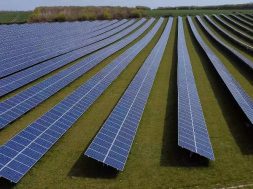
More than 2.5 GW capacity of the most economical cell design successfully inspected by ISRA VISION / GP SOLAR
The new way of inspecting the latest solar cell designs: Tailored high-contrast checks to achieve maximum yield
Currently the most economical solar cell design, the so-called PERC cells (passivated emitter and rear contact) can now individually be inspected with the highest contrasts. A new inspection system takes on the challenge of inspecting the cell’s rear side. With its exclusive multi-channel and multi-image technologies, it merges high contrast image parts for a perfectly clear final picture. By allowing for pre-defined pattern shapes to be detected, the toolset avoids pseudo defects and minimizes the slipping rate in PERC inspection. Solar cell manufacturers therefore receive an easy to operate and highly cost-effective way to push the efficiency of their production.
The solar industry is picking up interest in PERC-technology with accelerating pace, with the cell design expected to become the new standard in photovoltaic production. In the construction of a “passivated emitter and rear contact”-cell, a dielectric passivation layer of Aluminum Oxide and Silicon Nitride ensures the most efficient use of incident light. After placing the passivation on the back of the cell, a laser opens the contact points, at which the rear metallization should touch the silicon wafer. These laser openings in micrometer scale are critical for the efficiency of a cell and can be analyzed in detail with post laser inspection. Having printed the Aluminum layer on top and finished the cell by firing it with high temperatures, the laser openings again become visible through the thin metal layer. This challenges the inspection of the cell’s rear side during the optical quality classification process. Pseudo defects or previously unnoticed print defects result in unsatisfactory classifying and cause avoidable costs for rework and material.















